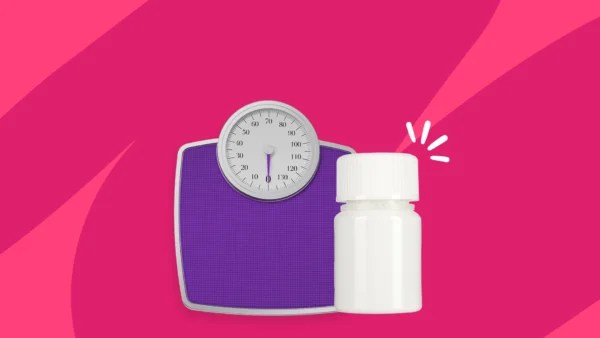Key takeaways
Vraylar typically stays in your system for one to two weeks after stopping it.
Most side effects from taking Vraylar should be gone within two weeks of stopping the drug.
If you’re considering stopping Vraylar, it’s important to work with your healthcare provider to develop a plan instead of abruptly stopping treatment.
Vraylar (cariprazine) is an antipsychotic medication that was approved by the Food and Drug Administration (FDA) in 2015 to treat schizophrenia and bipolar disorder. In 2022, Vraylar was also approved by the FDA as an adjunctive therapy for treating major depressive disorder.
Although Vraylar can be helpful to many people, there are instances when it may need to be stopped. For example, someone may experience negative side effects from Vraylar, or they may have recently found out that they’re pregnant.
If you are in a situation where you need to stop Vraylar, one question at the top of your mind is probably: How long does Vraylar stay in your system after stopping it? Typically, Vraylar stays in your system for about a week or two after the last dose.
Here, we’ll go over everything you need to know about how long Vraylar stays in your system, what to expect in terms of how long side effects may linger, and the importance of weaning off of Vraylar under medical supervision.
How long does medication stay in your system?
Before we look at how long Vraylar stays in your system after stopping it, it can be helpful to understand how long medications stay in your system in general and what factors impact this.
“The length of time a medication stays in your system is highly individualized and depends on your body’s ability to metabolize it,” says Toni Abelseth, a psychiatric mental health nurse practitioner at Midwest Psychiatric Care in Dickinson, North Dakota.
According to Abelseth, these factors can include:
- Underlying medical conditions you may have
- Your organ function
- Your weight
- Your metabolism
- The type of medication you are taking
- The dosage of medication you are taking
- How you are taking the medication (whether by mouth, injection, inhalation, etc.)
Another way of understanding how long medications stay in your body is to consider a medication’s half-life. “Half-life refers to the time it takes for half the dose of a drug to be eliminated from the body,” says Sazan Sylejmani, Pharm.D. “On average, medications stay in your system for about four or five half-lives,” Dr. Sylejmani notes.
How long does Vraylar stay in your system after stopping it?
There are several reasons why a person might want to stop taking antipsychotic drugs like Vraylar. “In my clinical experience, most prescription drugs are stopped either due to lacking effect, side effects, or cost,” Abelseth says. “I have seen all three concerns be a barrier for continuing Vraylar.”
Many people want to stop Vraylar because of its adverse side effects and potential risks. For instance, Vraylar’s boxed warnings say that the drug can increase the risk of suicidal thoughts and suicide attempts in some children and young adults. Additionally, it should not be used in certain populations, such as older adults with dementia-related psychosis or pregnant people. Many breastfeeding parents may be concerned about the medication getting into their breast milk as well.
Financial barriers may also be a reason you need to stop taking Vraylar. “Due to Vraylar not having a generic option available, insurance coverage and cost may be issues for patients,” says Abelseth.
As for how long Vraylar stays in your system after stopping it, the drug’s plasma concentration decreases by 50% one week after the last dose of Vraylar. “Therefore, it is assumed in an otherwise healthy individual without other factors affecting metabolism, the drug should be out of one’s system by two weeks,” Abelseth says.
Two weeks is the maximum it takes, and for some people, it may be eliminated faster than this. The half-life of Vraylar can range from two to four days, which correlates to it taking one to two weeks to be eliminated from the body. Regarding the elimination rate of medication, Dr. Sylejmani explains, “The factors that determine this for all medications include body mass index, liver and kidney function, genetics, and any drugs that influence liver metabolism.”
How long does it take for Vraylar side effects to go away?
Vraylar can have noticeable side effects for some people, which is one of the reasons you may be looking to stop taking it. “Some of the most common side effects of Vraylar are akathisia (an inability to stay still) and restlessness,” Abelseth says.
According to MedlinePlus, other common side effects of Vraylar include:
- Excessive sleepiness
- Anxiety and agitation
- Trouble sleeping, including falling asleep and staying asleep
- Balance issues
- Dizziness
- Increased hunger
- Weight gain
- Digestive trouble, including constipation, indigestion, and nausea
- Blurry vision
- Drooling
As MedlinePlus notes, Vraylar can cause serious side effects at times. These side effects require immediate medical attention:
- Seizures
- Uncontrolled or slowed body or facial movements
- Shuffled walk
- Inability to move
- Frequent falling
- Racing or irregular heartbeat
- Increased body temperature, high fever, and sweating
- Confusion
- Significant muscle stiffness
- Lack of facial expression
- Tongue sticking out of the mouth
- Trouble swallowing or breathing
- Itching
- New rash
- Dark urine or decreased urine output
- Allergic reaction, which can include hives, facial swelling, and swelling of the tongue, lips, or eyes
- Swelling in the feet and legs
Most of Vraylar’s side effects should wear off within the first two weeks of stopping it, but certain side effects can take longer or shorter to resolve.
For example, Abelseth says, “Short-term gastrointestinal side effects like nausea may subside within one day.” On the other hand, side effects like tardive dyskinesia (stiff, uncontrolled movements) or extrapyramidal side effects (Parkinsonian-like symptoms, neck and head spasms, and restlessness) can take a few weeks or more to fully resolve.
Dr. Sylejmani agrees that Vraylar side effects can take varying amounts of time to go away after stopping the medication. Immediate and short-term side effects like nausea, drowsiness, and dizziness usually resolve within two weeks. But, side effects like weight gain can take longer to resolve. “It took one patient a full three months to lose the 20 pounds she gained, even after stopping Vraylar,” he says.
Talk to your healthcare provider before stopping Vraylar
Although the risks and side effects of Vraylar may be concerning, it’s important to not stop taking Vraylar without consulting your healthcare provider. “Stopping any antipsychotic should only be done under guidance from your doctor,” Dr. Sylejmani says. “They will have to weigh the risks of relapse versus side effect burden.”
Dr. Sylejmani explains that the risks of abruptly stopping Vraylar include a recurrence of psychosis, mania, or mood swings. In many cases, slowly tapering Vraylar may be better than stopping it cold turkey. Either way, with close monitoring by a healthcare professional, stopping Vraylar can be done in a safe and effective way.
Your provider will help you weigh the pros and cons of stopping the medication and come up with the best plan of action. “The pros are reducing side effects and medication burden, and the cons are destabilizing a patient’s mental health,” Dr. Sylejmani adds. “It’s a balancing act that requires expertise and patience.”
RELATED: Vraylar withdrawal: What to expect when stopping the drug
Sources
- Cariprazine for treating schizophrenia, mania, bipolar depression, and unipolar depression: A review of its efficacy, Cureus (2023)
- Highlights of prescribing information, Allergan USA, Inc. (2022)
- Half-life, StatPearls (2023)
- VRAYLAR cariprazine capsule, gelatin coated, DailyMed (2024)
- Pharmacokinetics, Abbvie
- Cariprazine to treat schizophrenia and bipolar disorder in adults, Psychopharmacology Bulletin (2020)
- Akathisia, StatPearls (2023)
- Cariprazine, MedlinePlus (2023)
- Tardive dyskinesia, StatPearls (2023)
- Extrapyramidal symptoms, StatPearls (2023)











